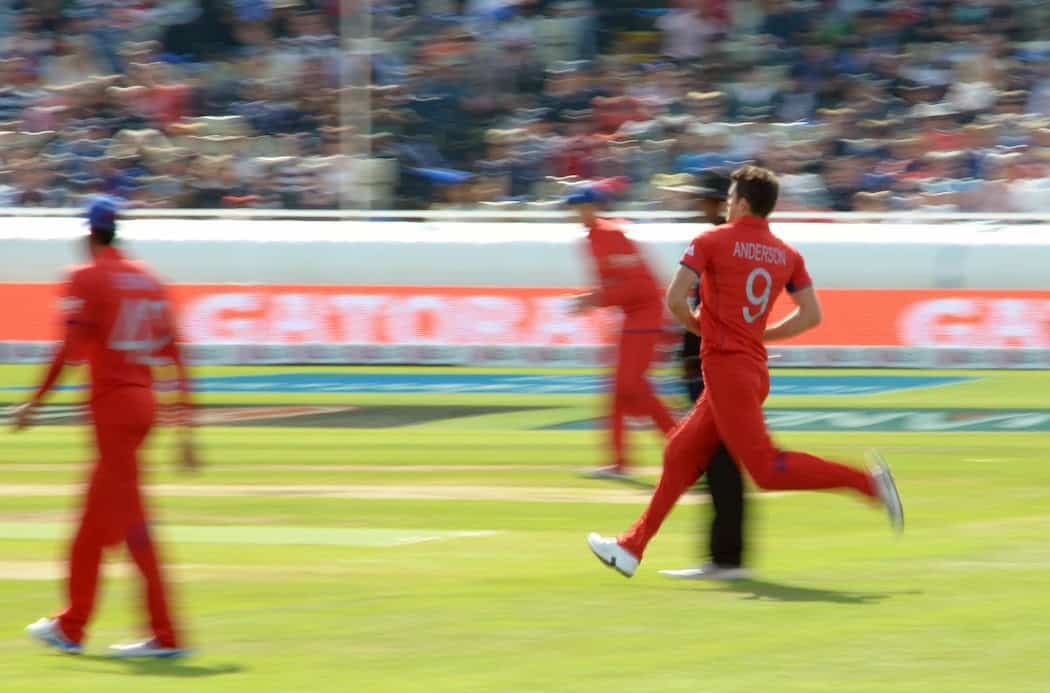If you’ve even watched a warm-up match in Cricket perhaps before a major ICC tournament, then you surely must have noticed that it doesn’t play out like a normal cricket match! Batsmen retire mid-way, and bowling changes are made against the run of play. It almost feels as if the rules for a warm-up cricket match in cricket work differently than a normal match!
The rules for a warm-up match are similar to that of a normal cricket match with a few relaxations. The captain doesn’t have to announce the playing XI, and each team is allowed to rotate players from their 15 member squad while ensuring 11 players are on the field at any time. These matches are not counted as official matches by ICC.
There is a lot more that goes on during a warm-up cricket match. In this article, we will understand everything about warm-up matches, their significance before any major ICC event, and the rules that are relaxed for such matches.
What is a Warm-up Match in Cricket?

The International Cricket Council (ICC) organizes the World tournaments, such as the ODI World Cup, T20I World Cup, Champions Trophy to name a few, periodically across the globe. These tournaments are held in high regard and are an excellent platform for players across the World to show their supremacy in World cricket.
These World tournaments are held all over the world primarily in the Indian subcontinent countries, Australia, New Zealand, England and Wales, West Indies, and South Africa. Each of these countries offers different playing conditions.
There’s the bounce in Australia whereas the ball swings in England a lot and it spins in the subcontinent pitches. Each location has something interesting to offer and teams want to understand these conditions better, especially before a World event.
ICC arranges the warm-up matches just before the actual event to allow the teams participating in the world events to get acclimatized to the playing conditions. These are normal cricket matches with rules slightly tweaked to allow teams to experiment in the batting and bowling department.

These matches are not official and the players’ stats are not considered. They are just what they have been named – Warm-ups. A similar analogy in Test cricket would be the matches against Board XI or President XI of the country where the visiting team experiments with batting and bowling combination before the actual Test series begins.
In the latest ICC event, the 2019 ODI World Cup, each participating team played a couple of warm-up matches before the tournament at four different venues in England and Wales namely Bristol County Ground, Cardiff Wales Stadium, Hampshire Bowl, and The Oval.
The warm-up matches also provide the fans with an opportunity to see their favorite stars in action and the officials to earn some extra ticketing and broadcasting money. Let us delve into the rules of these warm-up matches.
How Many Players Can Play in a Warm-up Match?
As has been the case with earlier ICC tournaments, the warm-up fixtures are the length of the actual tournament – 50 overs for the ODI World Cup or 20 overs for the T20I World Cup. The ICC events require each participating team to submit a squad of 15 players all of which can be fielded in the warm-up matches.
Unlike the regular matches where the participating team’s captains have to announce the playing XI, there is no need for such an announcement at the time when the toss takes place in a warm-up match. Captains can simply send anyone from a 15-member squad to bat, bowl or field.
What are the Rules for the Batting Team in a Warm-up Cricket Match?

Despite being a warm-up match all the modes of dismissals are possible for a batting team. There are generally 8-9 batsmen in the 15-member squad of a Team and they want each one of their batters to have a go in the middle.
Thus, it has often been observed that the batsmen retire after getting to a landmark – such as a half-century or a century – to give other batters a chance to get used to the conditions. Sometimes, the batsmen bat out of order, especially the ones whose recent form has not been so good, to have enough exposure in the middle.
Another point to note is that even the rules allow all the 15 members in the squad to be fielded, only 11 batsmen are allowed to bat in the match.
This effectively means that each team gets only 10 wickets to play with, like a normal cricket match. The batting team must prioritize the players they want to send to the middle for batting.
What are the Rules for the Bowling Team in a Warm-up Cricket Match?
For bowlers, all the other cricket rules apply as they are. There are generally 5-6 bowlers in the 15-member squad and the bowling teams strive to get some bowling practice of all of them.
Since only 11 fielders are allowed, bowlers are generally kept on the field to make it easier for the captain to rotate them as needed.
It must be noted though that although all players in the 15-member squad are allowed to bowl, no bowler can bowl more than 10 overs in ODI or 4 overs in a T20 warm-up game.
Are the Runs or Wickets considered in the Players’ Stats?
The runs scored by the batsmen or the wickets taken by the fielders are not considered in the player’s official statistics. It inadvertently removes the performance pressure from the players and allows the players to play freely which is exactly what the warm-ups are intended for.
How do Teams Strategize for Warm-up Matches?
The batting teams generally send their regular openers but then tinker with the rest of the batting order as per the match situation. The batting captain often calls the batsman back, if he feels that the particular batsman has spent enough time or that there are too many batsmen remaining to play.
If the team is chasing, the captain makes sure the send the finishers at the most suitable time.

The bowling teams prioritize their opening and death bowlers. The spinners are prioritized in the middle overs.
If there’s a new bowling sensation in the team that not many in the opposition have played before, the bowling captain may, at times, prefer not to have the opposition take a look at him at the cost of the new bowler not having enough match practice in the warm-ups.
Another approach applied by the rookie mystery bowlers is to not reveal all the tricks in their kitty in the warm-up games. They generally keep their bowling weapons for the main event to bamboozle the opposition batsmen.
The fitness niggles are also on the minds of the captains and the team management, especially for the bowlers. They avoid risking their prime bowlers by stressing themselves too much in a warm-up game. So in such cases, the bowlers bowl an over or two, or just completely refrain from participating in the warm-up games.
Why are Warm-up Matches not considered as Official Matches?
The warm-up matches are not considered as official matches as they have certain rules, as discussed above, around playing eleven that differ from the regular matches. Also, the purpose of these matches is to allow the players to play freely and try their skills without any performance pressure. Making these matches official would prove counter-productive in that regard.
Why are Warm-up Matches not considered even as List-A Matches?
List-A matches are nothing but limited-overs first-class matches. The warm-up matches are not even considered as List-A matches because of the varied history from one tournament to another.
The warm matches prior to the 1999 ODI world cup featured side playing any opposition available even if the players were first-class players. The warm-ups started getting standardized only since the 1999 ODI World Cup. To remove the complexity, the warm-ups are considered as friendly fixtures and nothing else.
Final Thoughts
Warm-up matches bring a unique proposition for the fans, players, teams, and organizing officials. Each of them gets something out of it which is slightly different from the regular games.
A low-key affair, if you will, in which the fans enjoy the extra matches apart from the main event, the teams and players get to try out certain strategies in the actual match-like environment, and for the officials, it’s a dress rehearsal before the big event begins and they make some extra money out of it.
It also provides local schools and communities with another chance to get involved with the Cricket World Cup. Warm-ups works for everybody involved party. Although the results don’t matter in a warm-up game, everybody wins in the end.
Featured Image Credit to Flying Cloud and the image is licensed under CC BY 2.0


